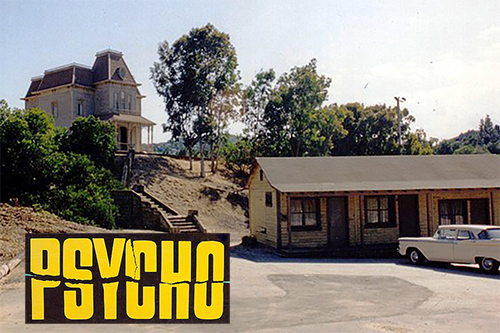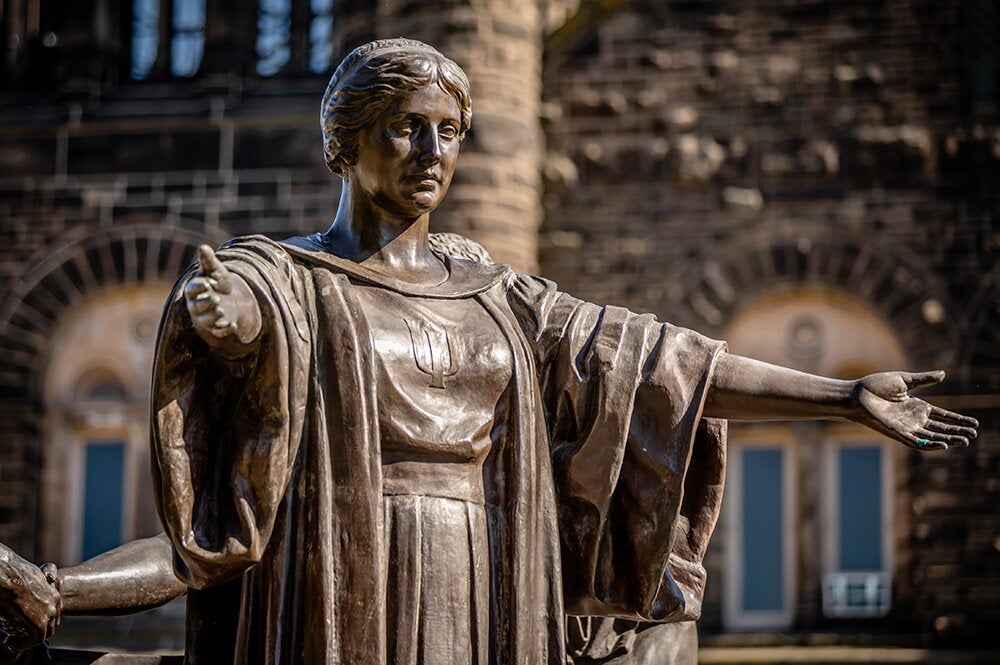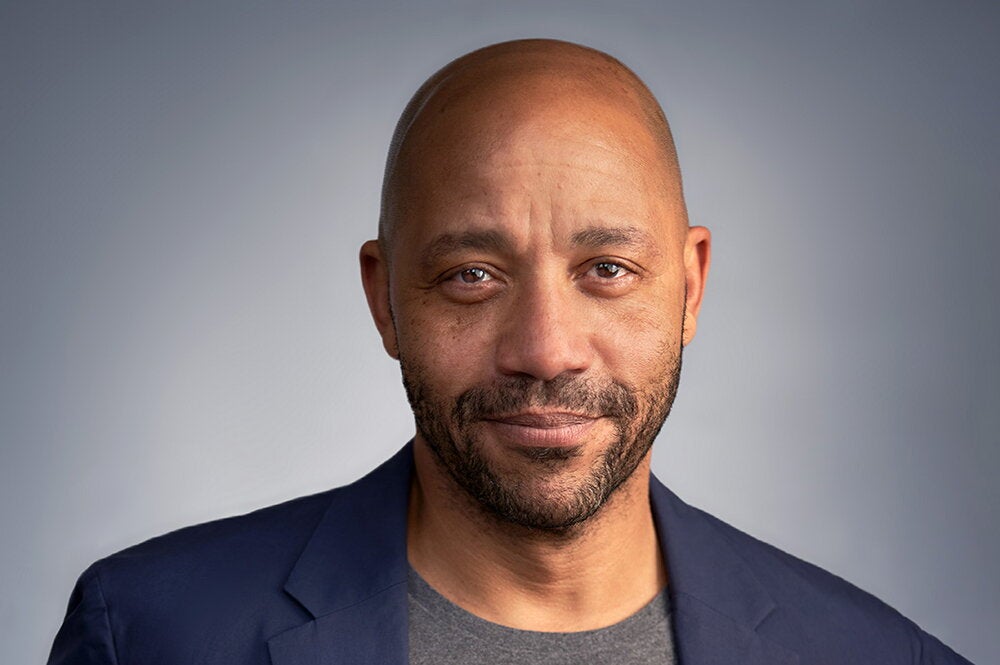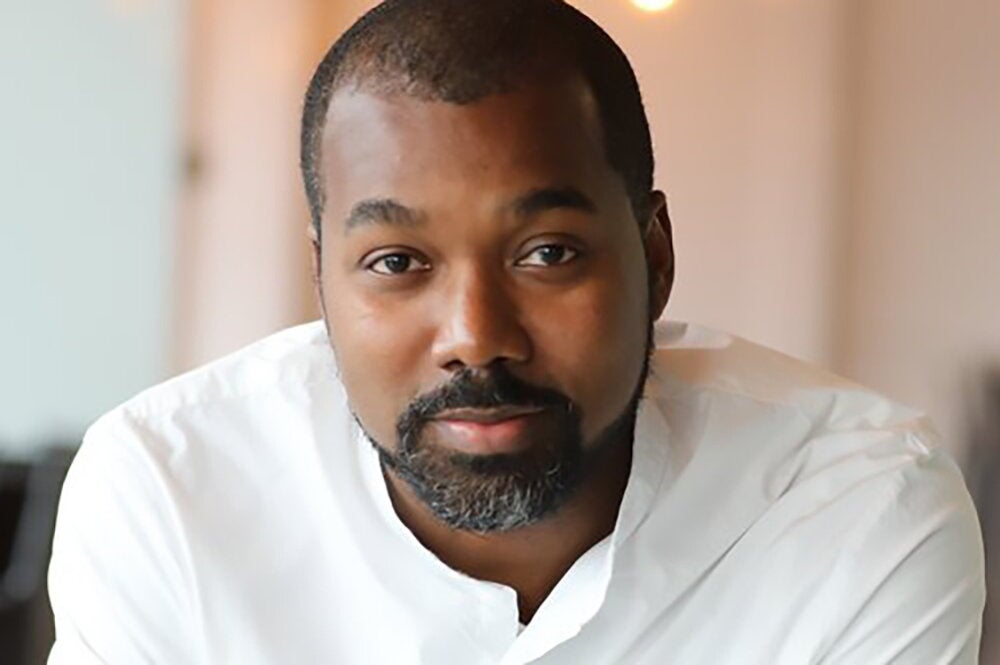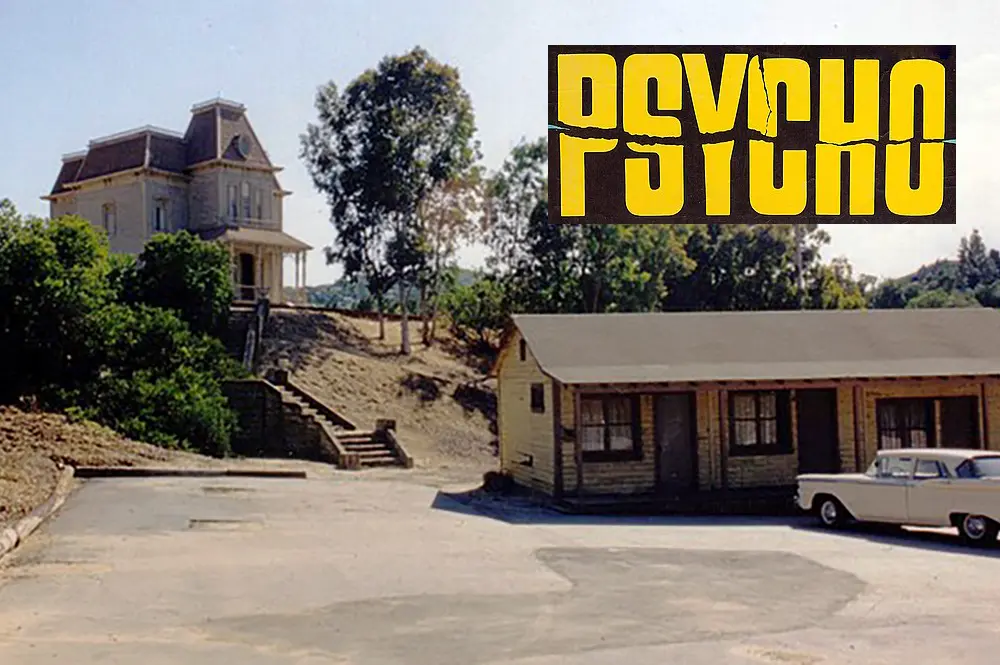
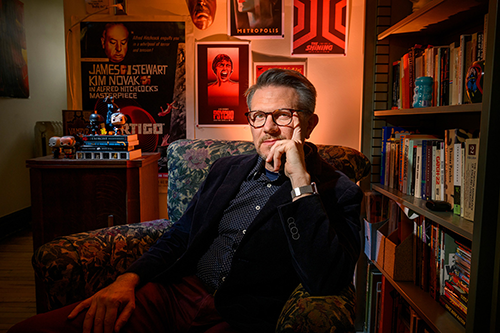
October brings another onscreen killing spree by the knife-wielding Michael Myers in “Halloween Ends,” purportedly the final movie in the “Halloween” film franchise that began 44 years ago and includes more than a dozen films. Jim Hansen is an English professor at the University of Illinois Urbana-Champaign who studies 20th century literature and film, including horror, Alfred Hitchcock and suspense films, and detective and spy novels. He spoke with News Bureau arts and humanities editor Jodi Heckel about the appeal of horror.
You teach a course titled “Why Do We Love Horror?” So, why do we love horror?
Whenever I hear this question, I recall a phrase from Leopold Von Sacher-Masoch’s “Venus in Furs,” the 1870 novella largely credited with kicking off our public conversations about masochism. “I am enchanted,” Sacher-Masoch tells us, “but at the same time filled with horror.” To me, the quotation perfectly sums up the experience of being frightened by a movie. We’re delighted by it AND we’re terrified by it. We’re drawn into a story at the same time that we’re revolted by that story. That’s a fascinating experience and one worth thinking about.
Perhaps horror teaches us how to handle change, perhaps it shows us examples of people who’ve experienced terror and made bad choices. Maybe it even forces us to feel empathy for those who live differently than we do. In any case, to watch horror is to be put at risk, and great art always puts the reader, viewer or listener at risk.
Horror cinema taps into some masochistic pleasure center for most of us. But there’s something counterintuitive about our culture’s masochism. In America, we define our heroes by their masochism. A beloved cinematic superhero like, say, Spider-Man, Batman or Iron Man, survives not so much by his capacity to dish out punishment but by his ability to take it. He controls his fate by withstanding pain, enduring abuse. Like most American cinematic protagonists, he chooses to experience pain in order to transform into the hero.
Masochism becomes a way for the American viewer to fashion an identity, to script their own pain. And we love horror because it allows us to do precisely that: script our own pain, choose the shape of our fears and then to face up to those fears. In theory, then, we can stand the pain of watching horror and seeing tormented bodies because it helps us learn about the world and about others, and we feel as though we grow stronger by doing so.
What elements make a successful horror movie?
Memorable horror films can feature vampires or ghosts or even mindless predators, but I believe that in the finest and most frightening movies, there’s always a safe space that one is trying to get to – like a cabin in the woods, a home or a small town. As the film unfolds, it reveals this supposedly safe space to be the most dangerous space of them all. Really great horror movies observe this basic rule. In effect, they erase the sites where we take comfort. Whether you’re attacked in your own home, a room you’ve rented, a town that you recall fondly or your own dreams, the familiar and the innocent become the sites of terror and unspeakable fear.
So, the best horror converts the people and places we believe to be good into a threat. In a film like “Halloween” (1978), director John Carpenter turns the suburbs – the space where so many white, middle-class people were moving in the 1970s to escape the supposed dangers of the big city – into the site of dread. In the end, Carpenter seems to say that whatever spot you might choose to live in to escape what you deem to be the terrors of life, the fictional suburb of Haddonfield, Illinois, better not be it.
Jordan Peele plays on this nicely in the opening scenes of “Get Out” (2017), which also show suburban roads that look just as safe yet remain just as treacherous as those in Carpenter’s Haddonfield. In fact, in Peele’s movie those racial issues that remain unspoken in the original “Halloween” become explicit. Watching “Get Out” is like getting an education in the history of horror film tropes. It’s a tremendously self-conscious piece of cinema.
What is your favorite horror movie?
Stanley Kubrick’s much-loved, much-criticized 1980 film “The Shining” is probably still my favorite simply because its weaving together of creepy, dissonant music with claustrophobic, low-angle camera work and the classic tropes of all those old Gothic novels makes it one of the most ambitious horror films ever produced.
